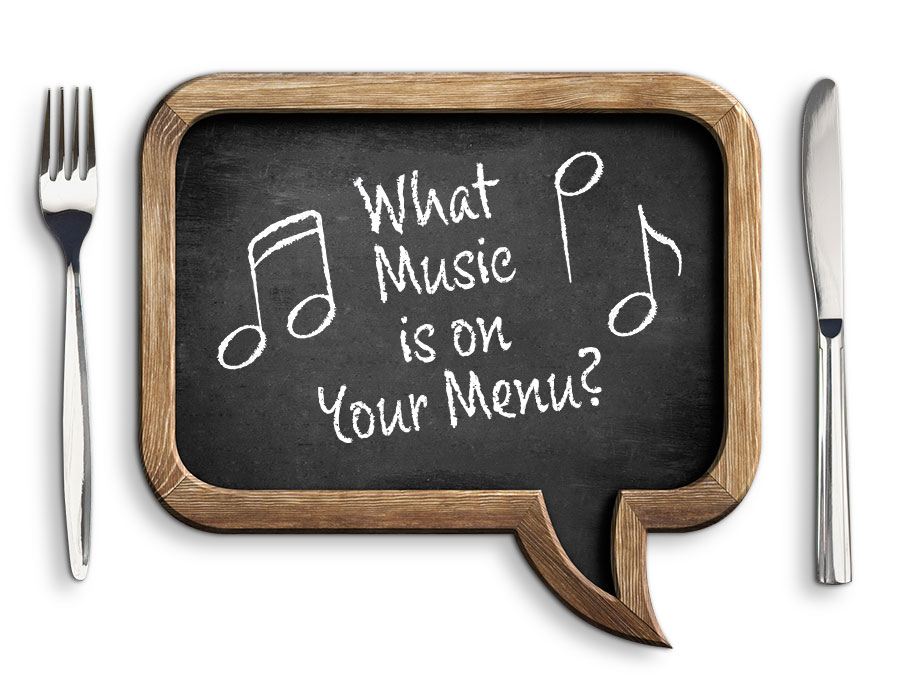Playing the right music at the right time and at the right volume is as essential to a restaurant’s health as the food on the menu or the décor of the room. The music you play tells your guests that you want them to linger and relax, get up and dance, or leave quickly and never come back.
Music engages us on an emotional level and has the power to help us through the most challenging times. Combine good music with great food and the result can be a positive and comfortable experience your guests will cherish – and make them more likely to linger, spend, and return.
In an increasingly competitive market space, progressive businesses are realizing the power of music to define themselves and communicate the aesthetic of their brand, says Noel Steen, creative director of Bespoke Music Services at MOOD:MEDIA. “The strategic selection of music can help communicate and strengthen a brand’s identity, can influence consumer behaviour, and increase sales.”
“The strategic selection of music can help communicate and strengthen a brand’s identity, can influence consumer behaviour, and increase sales.”
Noel Steen, creative director of Bespoke Music Services at MOOD:MEDIA
One study showed consumers are more likely to purchase higher priced wines when a restaurant is playing classical music rather than pop or top 40. The power of suggestion is strong, and customers are more apt to choose French wines when a restaurant plays French music.
Music impacts food choices
We perceive our environment through five senses: touch, taste and sight are proactive, while smell and hearing are passive. Unless we plug our ears, we cannot actively decide whether we want to hear something.
“Because our ability to listen is always present, hearing music is pervasive,” Steen says. “Guests in a retail or restaurant environment will always hear the music that’s played, which makes it an extremely effective part of the environment, but also stresses the importance of getting it right. Music is evocative – it speaks to emotion and it sets the tone and creates a mood that adds to the experience and can have a significant influence on a listener.”
“Music is evocative – it speaks to emotion and it sets the tone and creates a mood that adds to the experience and can have a significant influence on a listener.”
Noel Steen, creative director of Bespoke Music Services at MOOD:MEDIA
Studies show that faster paced music encourages faster eating. When it comes to volume, age and gender impact preferences, research shows younger people will linger when music is louder, while older people prefer restaurants where music is in the background. Volume impacts the food choices guests make, too, and can have an influence on overall sales, according to this 2018 study.
For foodservice operators to take control of the music and truly realize its powerful effect (in a legal way), it’s best to partner with a professional music curation and licensing provider. “Reducing your music program to the whim of your staff is a sure way to miss the mark,” Steen says.
“It’s also really important to understand the flow of a typical weekday or weekend, evening or dinner and to ensure that your music selection and volume is appropriate for each. Not every part of your day is the same, and the music should reflect that.”

7 music strategy tips for your restaurant
- Sound systems should meet the needs of your room and your format. Pay attention to sound quality, speaker selection and placement, and volume levels.
- Online, streaming, disc or satellite? The choice is yours.
- A music designer can help to create your custom playlists, a fully branded soundtrack that your customers won’t hear anywhere else.
- As the mood and tempo of the day change, so too should the music you play. Answering the demand of dayparts means not only offering different food menus, but also different musical menus.
- An effective music program might include faster paced tunes for the business lunch crowd, relaxing background for mid-afternoon loungers, sophisticated slower paced selections during dinner, then up-tempo choices for night caps and late-night diners.
- Music should make the dining experience fun, refreshing and relaxing for your guests. Give them a place they can put aside the stresses of the outside world for a while.
- Feedback from your customers and staff about what they like and what they don’t should be part of your music choices. Elevated conversations can be a sure sign background music is too loud.
Licensing and regulations to play music in your restaurant
When a business plays music in a commercial setting, it is using an artist’s work to enhance their business. Regulation requires that these artists be compensated for the commercial use of their intellectual property.
There is currently no license available that allows the end users, restaurant operators, to select music ‘on-demand’ and manage this content themselves. To be compliant, a subscription to a commercial background music provider is required. In short, consumer products, like Spotify, are not allowed.
Music creators and their publishers have rights under Canada’s Copyright Act. Any time music is played in restaurants, whether downloaded or streamed, copyright laws apply, and public performance license fees must be paid through performing rights organizations, like the Society of Composers, Authors and Music Publishers of Canada (SOCAN).
In Canada, SOCAN music licenses take into consideration the value of music to a business and ensure that the owners of that music are compensated legally and ethically. Entandem is a joint venture between RE:SOUND and SOCAN, created to simplify the licensing process.
Understand what your customers want to hear
A signature sound says a lot about your restaurant and your brand, and it’s often underutilized. Music consultants say it’s vital to evaluate selections for their energy and sound density and to understand your target demographic and those you want to attract – both as customers and employees. If the music stimulates and makes your staff happy, they’re going to do a much better job keeping diners happy.
Consultants recommend that restaurateurs ask themselves a simple question that sometimes doesn’t have a simple answer: Do you want to keep people in their comfort zone or do you want to play up to them? So-called “randomization,” so the music remains fresh and ever changing, is a critical element. Playing the same song or the same playlist over and over is a sure recipe for staff malaise and customer irritation.
The content and relative variety of a music program really depend on the particular aesthetic of the brand, Steen says. “The brand identity should lead all creative decisions. If a brand values variety, then the music should reflect this. At the same time, if a brand’s values are narrow, I would expect a more consistent sounding music program.”
Choosing the right music mix can lift restaurant sales. When the music fits, it elevates the restaurant, the food and the service, and sets it apart from the competition. The best restaurants are more than just places to eat; they are places that sing with positive energy and ambience as they say precisely what their guests want to hear.



